HONEY VARIETIES
Introduction to Honey Varieties: Exploring the Richness of Nature's Sweetness
Welcome to our comprehensive guide on the world of honey varieties! Nature’s remarkable gift to us, honey, comes in a delightful array of flavors, colors, and textures. Each honey variety is a testament to the unique nectar sources that bees collect from diverse floral landscapes across the globe. Join us on a journey to uncover the extraordinary range of honey varieties and discover the intriguing characteristics that make them truly exceptional.
From the verdant meadows adorned with wildflowers to the fragrant citrus groves, every honey variety has its own distinct story to tell. The essence of honey lies in the blossoms from which bees gather nectar, transforming it into this golden liquid treasure. The nectar’s composition, combined with the bees’ incredible alchemical processes, gives rise to an astonishing diversity of honey flavors and profiles.
Imagine tasting the delicate sweetness of clover honey, the enchanting aroma of lavender honey, or the citrusy notes of orange blossom honey. Picture the deep richness of eucalyptus honey or the robust character of buckwheat honey. With every honey variety, you embark on a sensorial journey that reflects the local flora and captures the essence of the surrounding environment.
Geography plays a vital role in shaping honey varieties. From the highlands of New Zealand, renowned for its prized manuka honey, to the sun-kissed fields of France, where acacia honey flourishes, each region imparts its unique terroir to the honey it produces. As you explore honey varieties from different parts of the world, you’ll discover how geographical factors influence taste, color, and even texture, offering a glimpse into the diverse landscapes that honeybees call home.
Beyond their delectable flavors, honey varieties also hold a multitude of health benefits and culinary possibilities. Packed with natural enzymes, antioxidants, and minerals, honey is not only a sweet treat but also a source of nourishment. Some honey varieties are sought after for their medicinal properties, while others lend themselves beautifully to culinary creations, enhancing dishes with their distinctive flavors and natural sweetness.
In this collection of honey varieties, we aim to celebrate the artistry of bees and the remarkable biodiversity of our planet. Join us as we delve into the depths of honey’s mesmerizing world, exploring its origins, tasting notes, and the cultural significance it holds in various regions. We invite you to savor each honey variety, indulge in its nuances, and gain a newfound appreciation for the incredible complexity and diversity found within the humble beehive.
So, let us embark together on this captivating journey through the honey kingdom, where every drop holds the essence of nature’s sweetness and the tireless work of our pollinator friends, the bees. Discover the magic of honey varieties, enrich your culinary endeavors, and deepen your understanding of the natural wonders that surround us.
Honey Varieties:
Wildflower honey is derived from the nectar of various wildflowers, making it a diverse and richly flavored honey. Its taste can range from mild and floral to robust and earthy, depending on the wildflowers present in the region.
Clover honey is one of the most common and widely available honey varieties. It is light in color, has a mild, sweet taste, and a subtle floral aroma. Clover honey is often used as a versatile sweetener and is popular in baking and cooking.
Orange blossom honey is produced from the fragrant blossoms of orange trees. It has a distinct citrus aroma and a delicate, fruity flavor. This honey variety is cherished for its light golden color and pairs well with teas and desserts.
Acacia honey comes from the nectar of the blossoms of acacia trees. It is prized for its light color, clear appearance, and mild, floral taste. Acacia honey is known for its slow crystallization and remains liquid for extended periods.
Lavender honey is derived from bees that collect nectar from lavender flowers. It exhibits a unique floral aroma with a delicate, sweet taste. Lavender honey is often enjoyed drizzled over desserts or used in tea.
Eucalyptus honey is produced by bees that feed on the nectar of eucalyptus blossoms. It has a robust, bold flavor with hints of menthol and a slightly medicinal undertone. Eucalyptus honey is known for its dark amber color and is often used as a natural remedy for coughs and colds.
Manuka honey is native to New Zealand and is derived from the nectar of the Manuka bush (Leptospermum scoparium). It is renowned for its strong antibacterial properties and is graded based on its Unique Manuka Factor (UMF). Manuka honey has a rich, earthy flavor and is often consumed for its potential health benefits.
Buckwheat honey is a dark-colored honey with a robust, molasses-like flavor. It is produced from the nectar of buckwheat flowers and has a strong, distinctive taste that is often described as bold and malty.
Tupelo honey is sourced from the blossoms of the tupelo tree, primarily found in the southeastern United States. It has a light golden color, a mild, buttery flavor, and a hint of floral sweetness. Tupelo honey is highly sought after for its unique taste and slow crystallization.
Chestnut honey is a dark amber honey with a robust, slightly bitter flavor. It is harvested from the nectar of chestnut tree blossoms and often has a tannic undertone. Chestnut honey pairs well with strong cheeses and is commonly used in savory dishes.
Heather honey originates from the nectar of heather plants found in moorlands and high-altitude regions. It is dark in color, with a distinctive, strong, and slightly tangy flavor. Heather honey has a thick, syrupy consistency and is highly regarded for its unique taste.
Leatherwood honey is produced in Tasmania, Australia, from the blossoms of the endemic leatherwood tree. It has a rich, complex flavor with hints of spice and a floral aroma. Leatherwood honey is prized for its rarity and unique taste.
Blueberry honey is made by bees that collect nectar from blueberry blossoms. It has a light amber color, a delicate sweetness, and subtle fruity notes. Blueberry honey is often used as a topping for pancakes, yogurt, or desserts.
Sourwood honey is primarily found in the Appalachian Mountains of the United States. It has a light amber color, a tangy and mildly sweet taste, and a pleasant caramel-like aftertaste. Sourwood honey is highly regarded for its distinct flavor profile.
Sunflower honey is derived from the nectar of sunflower blooms. It has a light to medium amber color, a mild, delicate taste, and a subtle floral aroma. Sunflower honey is commonly used as a table honey and in baking recipes.
Rhododendron honey is sourced from the nectar of rhododendron flowers. It is typically dark amber in color with a strong, pungent taste and a slightly bitter edge. Rhododendron honey is known for its unique characteristics and is found in certain regions of the world.
Linden honey, also known as basswood honey, comes from the fragrant blossoms of linden trees. It has a light amber color, a delicate floral aroma, and a fresh, slightly minty taste. Linden honey is cherished for its pleasant flavor and soothing qualities.
Raspberry honey is derived from the nectar of raspberry blossoms. It has a light to medium amber color and a delicate, fruity flavor with hints of raspberry essence. Raspberry honey is often enjoyed as a spread or drizzled over desserts.
Alfalfa honey is made from the nectar of alfalfa plants. It has a light color, a mild, clean taste, and a hint of grassy undertones. Alfalfa honey is commonly used as a table honey and is prized for its versatility.
Sage honey is produced by bees that collect nectar from sage plants. It has a light to medium amber color, a robust herbal flavor, and a hint of spiciness. Sage honey is popular for its distinct taste and is often used in savory recipes and herbal remedies.
Avocado honey is derived from the blossoms of avocado trees. It has a dark amber color, a rich, buttery flavor, and a hint of molasses. Avocado honey pairs well with cheeses and is prized for its unique taste.
Macadamia honey is sourced from the blossoms of macadamia nut trees. It has a light color, a smooth, nutty flavor, and a creamy texture. Macadamia honey is often enjoyed as a gourmet delicacy and is used in baking and confections.
Cotton honey is produced when bees collect nectar from the flowers of cotton plants. It has a light color, a mild, delicate taste, and a hint of floral sweetness. Cotton honey is primarily found in regions where cotton cultivation is prevalent.
Multifloral honey, also known as wild honey or mixed flower honey, is produced from the nectar of various flowers without a predominant source. It exhibits a diverse range of flavors, aromas, and colors, representing the local flora and foraging habits of the bees.
Coriander honey is made from the nectar of coriander flowers. It has a light to medium amber color, a delicate floral aroma, and a mild, sweet taste with subtle hints of spice. Coriander honey is prized for its unique flavor and pairs well with herbal teas.
Citrus honey encompasses a variety of honey types derived from the nectar of citrus blossoms such as lemon, lime, and grapefruit. Each citrus honey has its own distinctive flavor profile, ranging from tangy and citrusy to floral and sweet.
Coffee blossom honey is produced from the flowers of coffee plants. It has a light to medium amber color, a mild, floral aroma, and a nuanced flavor that can carry subtle notes of coffee and caramel. Coffee blossom honey is a specialty honey appreciated for its connection to the coffee industry.
Kanuka honey is sourced from the flowers of the Kanuka tree (Kunzea ericoides) native to New Zealand. It has a rich, full-bodied flavor with hints of herbaceous and medicinal undertones. Kanuka honey is known for its potential health benefits and is prized for its unique taste.
Rosemary honey is made from the nectar of rosemary flowers. It has a light amber color, a distinct herbal aroma, and a sweet, mildly floral taste with hints of rosemary flavor. Rosemary honey is often used in savory dishes, marinades, and herbal remedies.
Fir honey, also known as pine honey, is produced from the nectar of fir or pine trees. It has a dark amber color, a rich, resinous flavor, and a distinctive woody aroma. Fir honey is treasured for its complex taste and is often enjoyed as a natural sweetener.
Buckthorn honey is derived from the nectar of buckthorn flowers. It has a light to medium amber color, a mild, fruity taste, and a hint of tartness. Buckthorn honey is known for its pleasant flavor and is often used in culinary applications and natural remedies.
Pumpkin blossom honey is produced from the flowers of pumpkin plants. It has a light color, a mild, floral taste, and a subtle hint of pumpkin essence. Pumpkin blossom honey is enjoyed for its delicate flavor and versatility in various culinary creations.
Tualang honey is sourced from the Tualang tree (Koompassia excelsa) native to Southeast Asia. It has a dark amber color, a distinctive floral aroma, and a robust, slightly tangy taste. Tualang honey is highly prized for its potential health benefits and is known for its strong antibacterial properties.
Cactus honey, also known as prickly pear honey, is derived from the nectar of cactus flowers. It has a light to medium amber color, a unique, delicate flavor, and a subtle hint of fruitiness. Cactus honey is often found in arid regions and is valued for its rarity.
Kiawe honey comes from the nectar of kiawe trees (Prosopis pallida) found in Hawaii. It has a light color, a smooth, buttery taste, and a mild, floral aroma. Kiawe honey is treasured for its exquisite flavor and is often enjoyed as a gourmet honey.
Mesquite honey is produced from the nectar of mesquite tree blossoms. It has a rich, amber color, a bold, smoky flavor, and a distinctive caramelized taste. Mesquite honey is commonly found in arid regions and is prized for its unique profile.
Ulmo honey is sourced from the blossoms of the ulmo tree (Eucryphia cordifolia) native to Chile. It has a light amber color, a floral aroma with hints of vanilla, and a sweet, slightly spicy taste. Ulmo honey is highly regarded for its distinct flavor and is a sought-after specialty honey.
Cherry blossom honey is made from the nectar of cherry tree blossoms. It has a light color, a delicate, floral flavor, and a subtle hint of cherry essence. Cherry blossom honey is often associated with springtime and is prized for its ephemeral availability.
Lychee honey is derived from the nectar of lychee tree blossoms. It has a light to medium amber color, a tropical, fruity flavor, and a pleasant floral aroma. Lychee honey is enjoyed for its unique taste and is often used as a sweetener in desserts and beverages.
Dandelion honey is produced from the nectar of dandelion flowers. It has a light golden color, a sweet, floral taste, and a mild, earthy undertone. Dandelion honey is appreciated for its delicate flavor and is sometimes used as a natural remedy.
Honeydew honey, also known as forest honey or tree honey, is produced when bees collect the sugary secretions of certain insects found on trees. It has a dark color, a complex, slightly woody flavor, and a unique aroma. Honeydew honey is highly regarded for its intense taste and is often prized by honey connoisseurs.
Sour cherry honey is produced from the nectar of sour cherry tree blossoms. It has a light to medium amber color, a tart, fruity flavor, and a slightly acidic taste. Sour cherry honey is sought after for its unique tanginess and is often used in desserts and culinary creations.
Carob honey is sourced from the blossoms of carob trees. It has a dark amber color, a distinct, rich flavor reminiscent of caramel or molasses, and a slightly bitter taste. Carob honey is appreciated for its robust character and is used in both sweet and savory dishes.
Black locust honey is produced from the nectar of black locust tree blossoms. It has a light color, a delicate, mildly sweet taste, and a subtle floral aroma. Black locust honey is prized for its clarity and is often used as a table honey or in baking recipes.
Strawberry tree honey, also known as arbutus honey, is derived from the blossoms of the strawberry tree. It has a dark amber color, a strong, slightly bitter taste, and a rich, woody aroma. Strawberry tree honey is highly regarded for its unique flavor and is found in certain regions of the world.
Rose honey is made from the nectar of rose flowers. It has a light color, a delicate floral taste, and a pleasant aroma reminiscent of roses. Rose honey is often used as a gourmet delicacy, added to desserts, or enjoyed as a natural sweetener.
Cranberry honey is derived from the nectar of cranberry blossoms. It has a light to medium amber color, a tangy, slightly tart flavor, and a hint of cranberry essence. Cranberry honey is often used as a sweetener in cranberry-based recipes or enjoyed as a unique table honey.
Meadowfoam honey is produced from the nectar of meadowfoam flowers. It has a light golden color, a delicate, vanilla-like flavor, and a creamy, buttery texture. Meadowfoam honey is highly regarded for its sweet, unique taste and is often used in gourmet desserts and confections.
Fireweed honey is made from the nectar of fireweed flowers. It has a light color, a delicate, floral taste, and a hint of spiciness. Fireweed honey is often sought after for its purity and is typically found in regions with fireweed blooms.
Apple blossom honey is produced from the nectar of apple tree blossoms. It has a light color, a sweet, fruity flavor, and a delicate floral aroma. Apple blossom honey is commonly used as a natural sweetener and pairs well with various culinary creations.
Pear honey is derived from the nectar of pear tree blossoms. It has a light golden color, a subtle, sweet flavor, and a hint of pear essence. Pear honey is appreciated for its delicate taste and can be enjoyed on its own or used in recipes.
Mangrove honey is sourced from the nectar of flowers found in mangrove forests. It has a dark amber color, a robust, earthy flavor, and a unique, caramel-like sweetness. Mangrove honey is cherished for its distinct taste and is often used in traditional remedies.
Hawthorn honey is produced from the nectar of hawthorn tree blossoms. It has a light to medium amber color, a mildly sweet flavor, and a hint of herbal undertones. Hawthorn honey is enjoyed for its unique taste and potential health benefits.
Palm honey, also known as palm syrup, is derived from the sap of certain palm trees. It has a dark color, a thick consistency, and a rich, caramel-like flavor. Palm honey is often used as a sweetener in traditional cuisines and desserts.
Tamarind honey is produced from the nectar of tamarind tree blossoms. It has a deep amber color, a tangy, slightly sour flavor, and a unique fruity taste. Tamarind honey is used in various culinary applications, particularly in Asian cuisines.
Beechwood honey is sourced from the nectar of beech tree blossoms. It has a dark amber color, a bold, woody flavor, and a slightly smoky undertone. Beechwood honey is treasured for its robust taste and is often used as a gourmet honey.
Lime blossom honey is produced from the nectar of lime tree blossoms. It has a light color, a delicate, citrusy flavor, and a subtle floral aroma. Lime blossom honey is valued for its refreshing taste and is often used as a natural sweetener.
Oak honey is derived from the nectar of oak tree blossoms. It has a dark amber color, a robust, intense flavor, and a distinctively strong aroma. Oak honey is appreciated for its bold taste and is often sought after by honey enthusiasts.
Lemon blossom honey is made from the nectar of lemon tree blossoms. It has a light color, a tangy, citrusy flavor, and a refreshing aroma. Lemon blossom honey is often used as a natural sweetener and is popular for its bright, zesty taste.
Pomegranate honey is made from the nectar of pomegranate flowers. It has a dark amber color, a sweet, tangy flavor, and a rich, fruity aroma. Pomegranate honey is enjoyed for its distinct taste and is used in both sweet and savory recipes.
Walnut honey is sourced from the nectar of walnut tree blossoms. It has a medium to dark amber color, a robust, nutty flavor, and a slightly bitter aftertaste. Walnut honey is appreciated for its intense taste and is often used as a gourmet honey.
Mustard honey is made from the nectar of mustard plant blossoms. It has a light color, a bold, tangy flavor, and a hint of spiciness. Mustard honey is prized for its unique taste and is often used in marinades, dressings, and sauces.
Sainfoin honey is sourced from the nectar of sainfoin, a legume plant. It has a light amber color, a delicate, floral flavor, and a smooth, creamy texture. Sainfoin honey is appreciated for its mild taste and is often enjoyed as a table honey.
Quince honey is produced from the nectar of quince tree blossoms. It has a light to medium amber color, a sweet, fruity flavor, and a pleasant, floral aroma. Quince honey is commonly used in desserts, jams, and preserves.
Basil honey is derived from the nectar of basil flowers. It has a light golden color, a distinctive, herbal flavor, and a fresh, aromatic scent. Basil honey is cherished for its unique taste and is often used in culinary dishes, teas, and cocktails.
Marjoram honey is made from the nectar of marjoram flowers. It has a light to medium amber color, a sweet, floral taste, and a pleasant, fragrant aroma. Marjoram honey is enjoyed for its delicate flavor and is used in various culinary applications.
Saffron honey is sourced from the nectar of flowers in saffron crocus plants. It has a light color, a subtle, floral flavor with hints of saffron, and a delicate sweetness. Saffron honey is highly prized for its exquisite taste and is often used in gourmet recipes and desserts.
Bluegum honey is made from the nectar of bluegum, or eucalyptus, tree blossoms. It has a medium amber color, a bold, robust flavor with a hint of menthol, and a slightly woody aroma. Bluegum honey is sought after for its strong taste and is often used in baked goods and herbal remedies.
Blackberry honey is derived from the nectar of blackberry blossoms. It has a medium amber color, a sweet, fruity flavor with hints of berry, and a pleasant floral aroma. Blackberry honey is enjoyed for its delightful taste and can be used as a natural sweetener or drizzled over desserts.
Lucerne honey, also known as alfalfa honey, is made from the nectar of lucerne, or alfalfa, plant blossoms. It has a light color, a mild, delicate flavor, and a hint of herbal notes. Lucerne honey is often used as a table honey and is prized for its smooth taste.
Melilot honey is produced from the nectar of melilot, or sweet clover, plant blossoms. It has a light to medium amber color, a sweet, floral flavor, and a mild herbal aroma. Melilot honey is appreciated for its delicate taste and is often used in teas and baked goods.
Elderflower honey is made from the nectar of elderflower blossoms. It has a light color, a delicate, floral flavor with hints of citrus, and a fragrant aroma. Elderflower honey is prized for its unique taste and is often used in desserts, herbal teas, and cocktails.
Persimmon honey is produced from the nectar of persimmon tree blossoms. It has a light to medium amber color, a sweet, fruity flavor with hints of caramel, and a pleasant aroma. Persimmon honey is highly regarded for its unique taste and can be enjoyed on its own or used as a natural sweetener.
Rapeseed honey is sourced from the nectar of rapeseed, or canola, plant blossoms. It has a light golden color, a mild, buttery flavor, and a smooth texture. Rapeseed honey is enjoyed for its pleasant taste and is commonly used as a table honey and in baking.
Clary sage honey is produced from the nectar of clary sage plant blossoms. It has a light to medium amber color, a delicate, herbal flavor with hints of mint and earthiness, and a pleasant aroma. Clary sage honey is treasured for its unique taste and can be used in herbal teas or as a natural sweetener.
Palmira honey is made from the nectar of palmira, or toddy palm, blossoms. It has a light golden color, a rich, caramel-like flavor with hints of molasses, and a thick, viscous consistency. Palmira honey is enjoyed for its unique taste and is often used as a sweetener or in traditional desserts and sweets.
Hibiscus honey is produced from the nectar of hibiscus flowers. It has a light to medium amber color, a delicate, floral flavor with hints of citrus, and a pleasant aroma. Hibiscus honey is cherished for its delightful taste and can be used in teas, cocktails, or drizzled over fruit salads.
Thyme honey is sourced from the nectar of thyme flowers. It has a light to medium amber color, a robust, herbal flavor with hints of mint and a slightly earthy undertone, and a pleasant aroma. Thyme honey is highly regarded for its savory taste and can be used in marinades, dressings, or paired with cheese and charcuterie.
Mahogany honey is sourced from the nectar of mahogany tree blossoms. It has a dark amber color, a rich, woody flavor with hints of molasses and spices, and a robust aroma. Mahogany honey is highly regarded for its intense taste and pairs well with strong cheeses and dark chocolate.
Mint honey is made from the nectar of mint plant blossoms. It has a light golden color, a refreshing, minty flavor with hints of sweetness, and a pleasant, cooling aroma. Mint honey is highly regarded for its unique taste and is often used in teas, desserts, and cocktails.
Cilantro honey is produced from the nectar of cilantro plant blossoms. It has a light to medium amber color, a delicate, herbaceous flavor with citrus undertones, and a pleasant aroma. Cilantro honey is treasured for its distinct taste and can be used in dressings, sauces, or paired with fresh herbs and vegetables.
Lotus honey is made from the nectar of lotus flowers. It has a light golden color, a sweet, floral flavor with hints of citrus, and a pleasant aroma. Lotus honey is appreciated for its unique taste and can be used in teas, desserts, or enjoyed on its own as a gourmet treat.
Jasmine honey is produced from the nectar of jasmine flowers. It has a light golden color, a delicate, floral flavor with sweet undertones, and a pleasant, aromatic aroma. Jasmine honey is enjoyed for its fragrant taste and can be used in teas, desserts, or paired with fresh fruits.
Grapefruit honey is produced from the nectar of grapefruit blossoms. It has a light golden color, a tangy, citrusy flavor with a hint of bitterness, and a refreshing aroma. Grapefruit honey is enjoyed for its unique taste and can be used in beverages, dressings, or as a glaze for seafood and poultry.
More From The Hive:
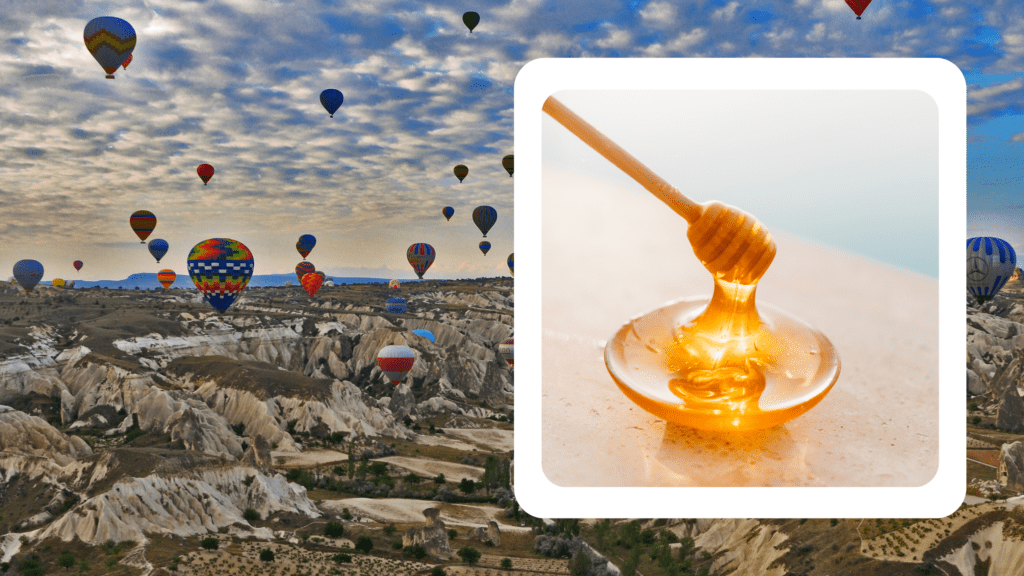
Unveiling Turkey’s Sweet Symphony: Exploring Honey Types and Varieties
Turkey, a land where ancient traditions meet breathtaking landscapes, has a rich history of honey production and a remarkable diversity of honey types. With its diverse climate zones, vast floral resources, and a strong culture of beekeeping, Turkey offers an ideal environment for bees to gather nectar and create a

Discovering Ethiopia’s Golden Treasures: A Journey Through Honey Types and Varieties
Ethiopia, a land known for its rich history, vibrant culture, and breathtaking landscapes, is also celebrated for its diverse and high-quality honey production. With its lush forests, fertile valleys, and vast floral resources, Ethiopia offers an ideal environment for bees to thrive and create a wide range of honey types.
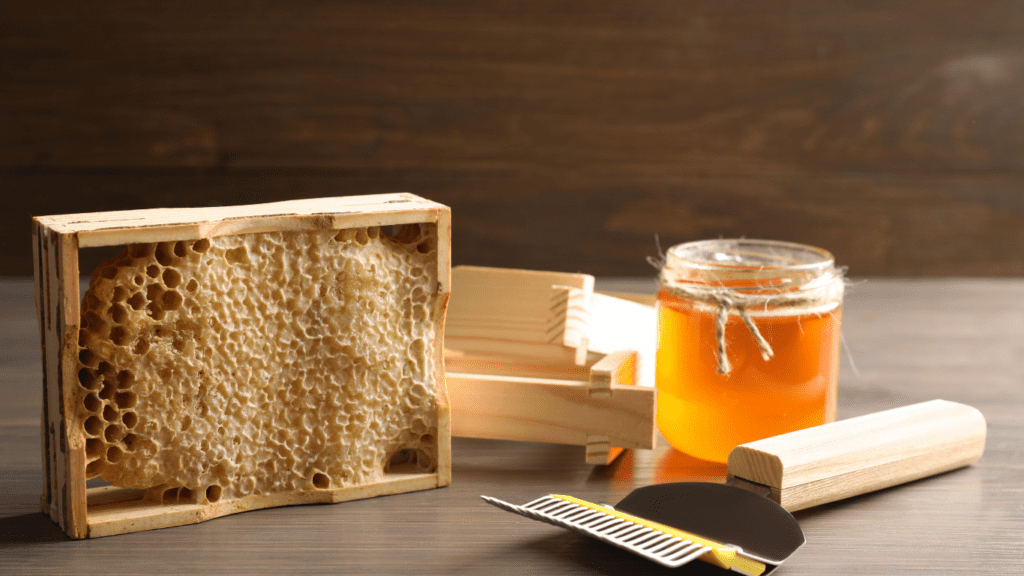
Getting Started with Beekeeping: Essential Equipment and Supplies
Starting your journey as a beekeeper is an exciting endeavor that allows you to connect with nature, support pollinators, and reap the rewards of honey production. To set yourself up for success, it’s crucial to have the right equipment and supplies. In this blog, we will guide you through the
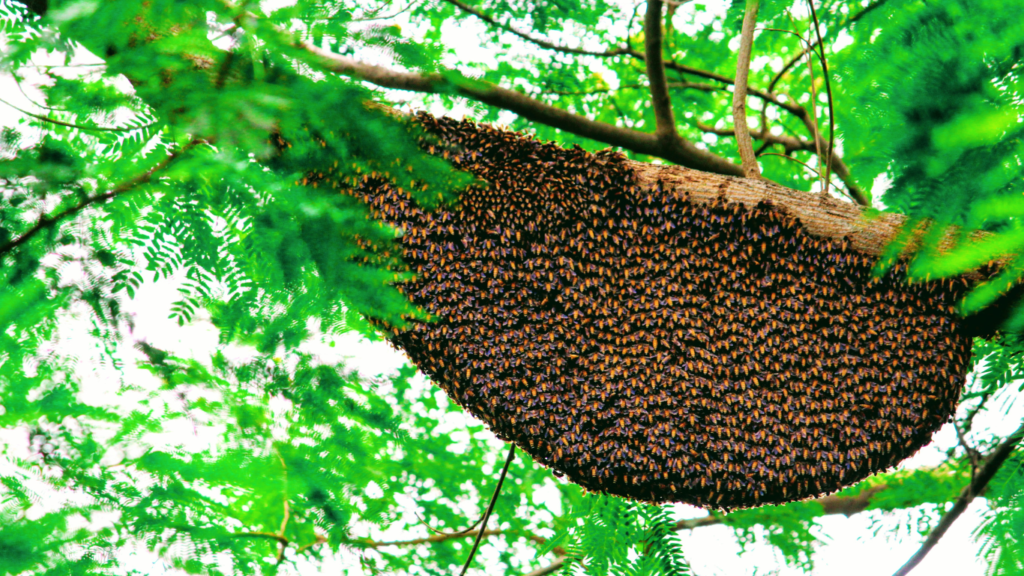
Choosing the Right Hive: Exploring Different Beehive Types
Selecting the right beehive is a crucial decision for beekeepers. The beehive serves as the home for your honeybee colony and plays a vital role in its success and productivity. With various hive types available, it’s important to understand their unique characteristics and suitability for your beekeeping goals. In this
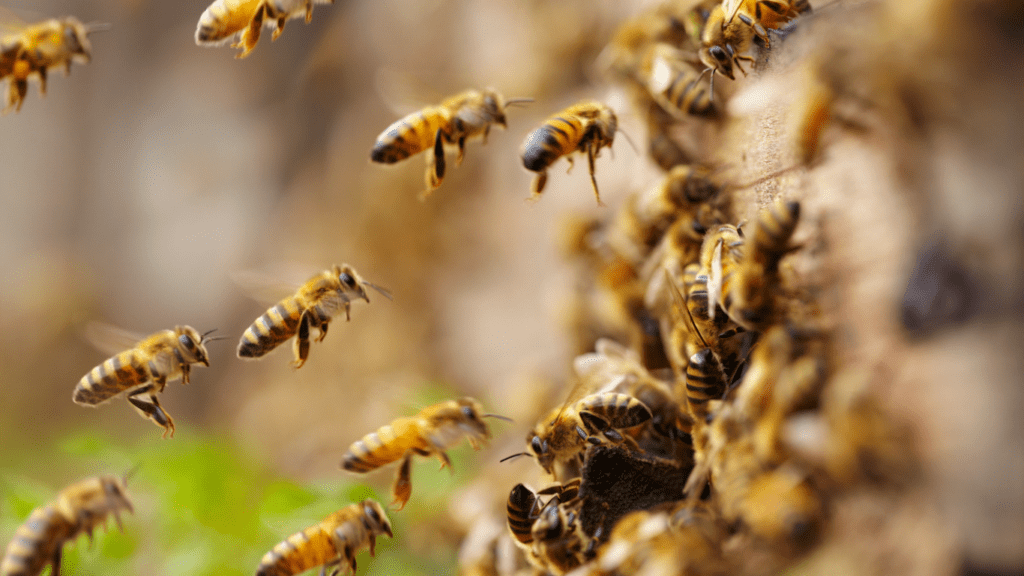
The ABCs of Bees: A Beginner’s Guide to Understanding Bee Basics
Bees are incredible creatures that have been buzzing around for millions of years, playing a vital role in our ecosystem. From pollinating flowers to producing delicious honey, bees are an integral part of our natural world. If you’re new to the world of bees and want to unravel the secrets
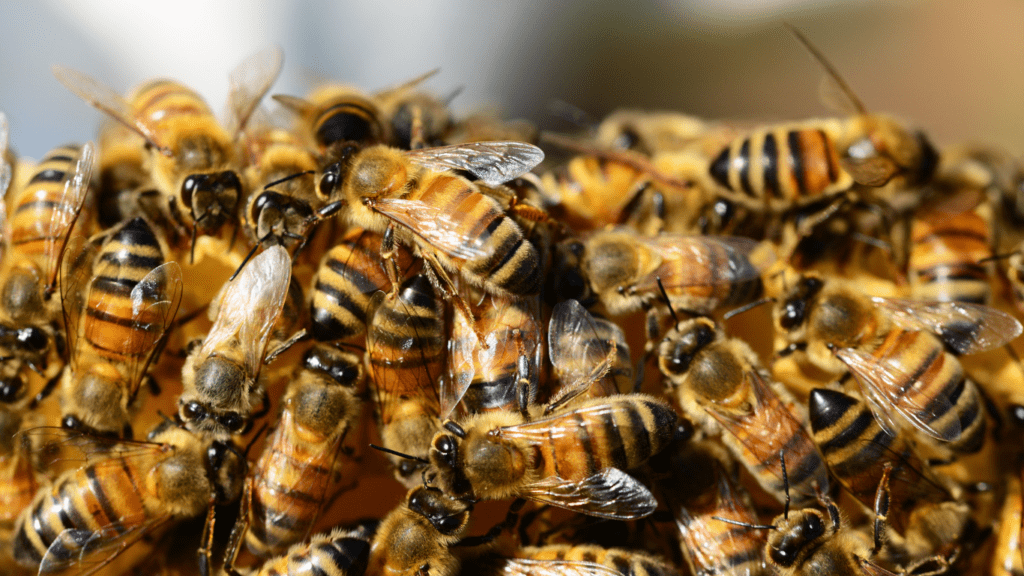
The Secret Life of Bees: Unraveling the Intricacies of Bee Behavior
Bees, with their intricate social structure and fascinating behaviors, lead a secret life that is both awe-inspiring and complex. As we delve into the hidden world of bees, we uncover a realm of communication, cooperation, and efficiency that is vital to their survival and our ecosystem. In this blog, we
